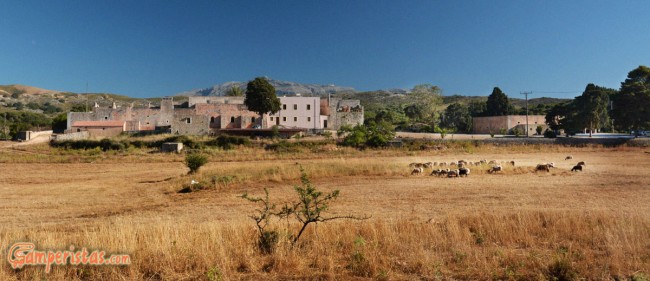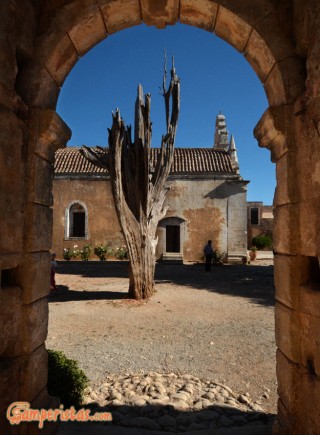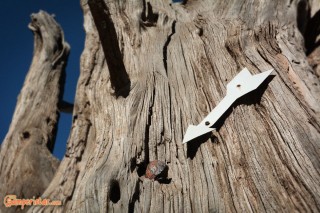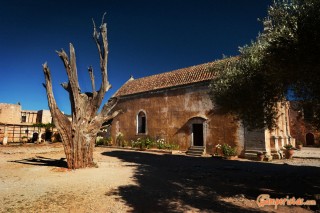
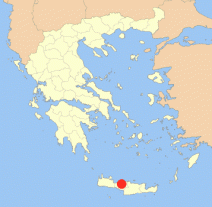 Most foreign tourists visit Moni Arkadiou motivated by the beauty of the scenery highlighted in travel guides and postcards. They won’t be disappointed; it is exactly as shown in the photos, a mixture of Renaissance grandeur and rural charm. Cretans consider it a sacred place. What is odd is that they don’t venerate God or a Saint but freedom itself! Apparently the relationship between Cretans and religion is more complicated than expected
Most foreign tourists visit Moni Arkadiou motivated by the beauty of the scenery highlighted in travel guides and postcards. They won’t be disappointed; it is exactly as shown in the photos, a mixture of Renaissance grandeur and rural charm. Cretans consider it a sacred place. What is odd is that they don’t venerate God or a Saint but freedom itself! Apparently the relationship between Cretans and religion is more complicated than expected
[sam id=”7″]
Moni Arkadiou is conveniently located 20 km from Rethymno in a 500 m. high plateau at the foot of mountain Ida. The parking lot [35.31030,24.62820] is spacious and flat with clusters of trees providing welcome shade. If you don’t mind the fact that 1.500 people most of them children and women died in violent battle 150 years ago in the exact same spot, then it could be ideal for getting a good night’s sleep in absolute silence.
Alas, the vicinity with the ‘Heroon’, (the former windmill converted into an Ossuary to commemorate the heroes of that battle) where hundreds of skulls and skeletons are being displayed to the public, doesn’t help the situation.
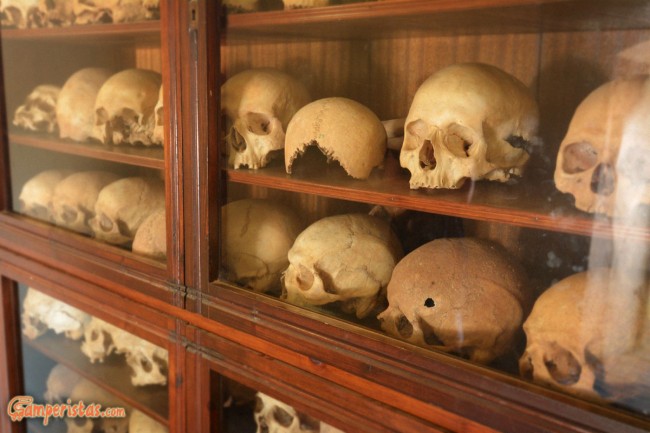
Moni Arkadiou is open from 9.00 – 20.00 during high season (June-August). You could find the opening hours for all other months on the monastery’s site . What you won’t find on the website is that there is a 2,50 euro entrance ticket for foreigners only; Greeks are considered pilgrims and they enter for free. I really can’t say if it’s right or not. As a Greek (and Cretan!) I believe that it would be unacceptable to charge local people for Arkadi not because it is a place of worship but because it is part of our collective memory being closely related with the Cretan Revolution of 1866 (yes, we had many at various times!) and the liberation from the Ottomans. Crete is a place where history still matters; you would be surprised if you knew how strong emotions this site generates. On the other hand since the monastery attracts thousands of tourists, there is an increased need for extra workers, for cleaning and maintenance. Of course you can argue if you think that it’s unfair (once more if you are Christian Orthodox)…
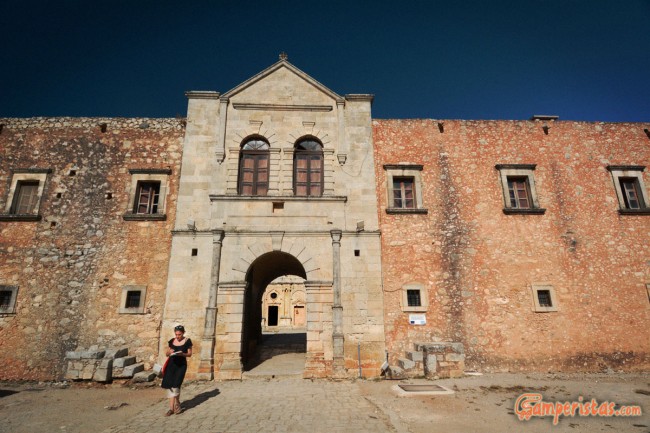
From the outside it looks like a fortress, which is typical for Cretan monasteries. Once within the walls, what impresses the most is the unique venetian baroque architectural style of the church. It was built in the 16th century with forms and motifs inspired directly by Palladio’s works!
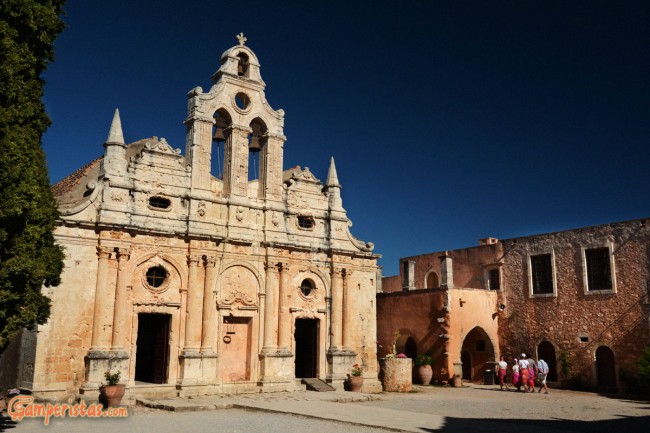
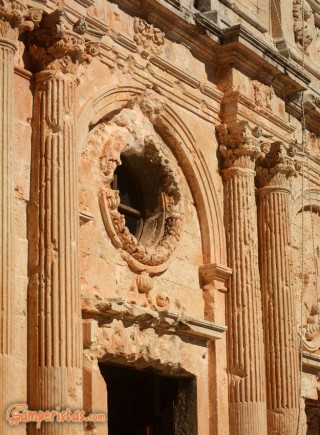
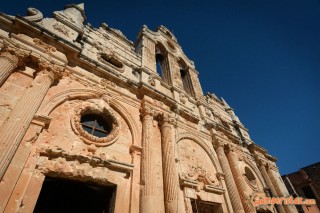
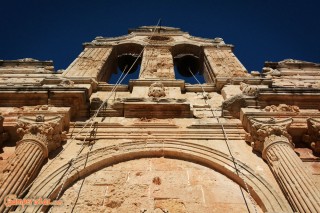
The monastery is still inhabited by monks. Apart their private cells, all the other buildings (cellars, cloisters, gates, the old refectory currently used as museum and the churches) are accessible to visitors.
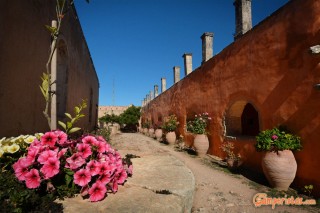
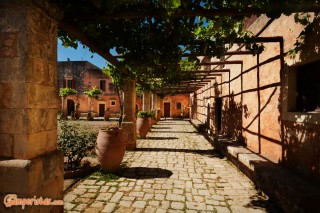

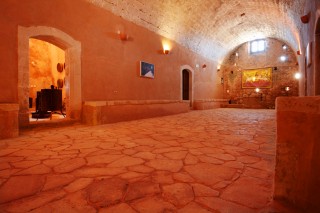
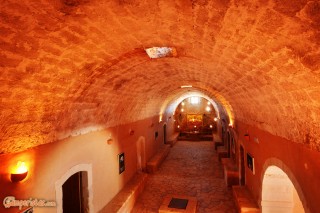
In the courtyard of the monastery a tragic relic of the battle is transformed into the most popular spot for photos. It’s the centuries-old cypress or what is left of it, allegedly in the shape of cross. The arrow indicates the point on the trunk where a bullet is embedded. Don’t be surprised if you have to wait your turn to pose for a pic with the dead tree.
A visit to Arkadi is not complete without entering the ruins of the old wine cellar converted into gunpowder magazine during the siege of 1866. After two centuries of Ottoman occupation, Cretans were beginning to see an end to the oppression hoping for a kind of autonomy or even independence. Although the Sultan had signed the Hatt-i Hümayun of 1856, a reform decree promising civil and religious equality, the Ottomans were reluctant to apply it having on their side the official church (!). The Arkadi monastery became a center of Cretan rebellion. They didn’t have neither hope nor options left, so when they realized that the end was close, they decided to blow the gunpowder magazine on November 9, 1866 . The “Arkadi holocaust”, this desperate cry for freedom and dignity, triggered strong reactions in civilized Europe; the Cretan or Eastern Question couldn’t be ignored for much longer. Crete was finally united with Greece in 1913.

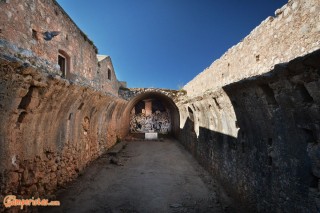

[sam id=”7″]

